How digital publishers can reduce churn rate and build lasting loyalty
 Olha Lypnytska
Olha Lypnytska-it2smaqmcq.webp) © by DragonImages via Canva Pro
© by DragonImages via Canva ProSubscriber churn is one of the biggest challenges digital publishers face today. Across nearly 300 publishers in the INMA database, most report having about double the number of former subscribers compared to active ones. For example, the average churn rate among US streaming services has surged to 5.5% - more than double the 2% recorded in 2019.
While attracting new customers and readers is important, keeping existing subscribers engaged and satisfied is what drives long-term success. Understanding why readers leave is the first step to building strategies that make them stay.
Why readers churn?
Subscriber churn isn’t one-size-fits-all. To tackle it effectively, publishers need to understand the two distinct types - voluntary and involuntary - and address each with tailored strategies.
Involuntary subscription churn, often called “the silent killer,” happens when subscribers are lost due to payment failures rather than choice. Voluntary churn, by contrast, occurs when readers actively decide to cancel, usually signaling dissatisfaction or misalignment with the service.
The top reasons for involuntary churn are:
Expired or outdated payment information
Insufficient funds
Technical glitches or temporary bank declines
The primary drivers of voluntary churn include:
Low perceived value. Subscribers may feel they are not using the service enough or that it offers "poor value for money". This is particularly prevalent when promotional rates expire, leading subscribers to re-evaluate the service at its full price.
Content irrelevance or fatigue. The content may be perceived as "too clickbaity" or not useful enough to justify the cost. Additionally, readers may feel overwhelmed by the volume of content, leading to a sense of information overload.
Poor user experience and customer service. A difficult or confusing user experience (UX), slow-to-load pages, or frustrating customer service issues can directly lead to cancellation.
Ideological disagreements. A significant portion of churn can be attributed to political or ideological concerns, with subscribers canceling over a publication's perceived bias or specific editorial decisions.
For example, in late 2024, The Washington Post experienced a significant churn, losing 250,000 subscribers - 10% of its base - following its controversial decision not to endorse a presidential candidate.
Dimension | Voluntary churn | Involuntary churn |
Causes | Lack of perceived value, irrelevant content, poor UX, ideological misalignment | Expired credit cards, insufficient funds, technical failures, bank declines |
User action | Active decision to cancel, often following an exit survey or direct communication | Passive, the result of a system failure with no active user input |
Metrics | Exit survey data, content engagement metrics (e.g., return rate, completion rate), app usage, frequency of visits | Payment decline rate, dunning recovery rate, e-mail open/click rates for billing communication |
Prevention | Personalization, compelling content bundles, UX/UI improvements, community building, responsive customer support | Automated payment retries, proactive dunning email sequences, automatic card updater services |
Fixing failed payments is relatively straightforward, but winning the voluntary battle means tackling the harder question: how can media brands ensure readers continue to see value and stay engaged?
Strategies for reducing voluntary churn in digital publishing
Create a strong Content Value Proposition (CVP)
A clear Content Value Proposition is the foundation of subscriber retention. Publishers must communicate why their content is worth paying for - what makes it unique, trustworthy, or irreplaceable. If readers can easily find the same information for free elsewhere, they won’t see value in staying subscribed.
This can mean emphasizing a distinctive editorial voice, offering deeper insights, or providing clarity in an overwhelming news cycle.
How publishers apply CVP
The Guardian saw a record surge in US reader contributions after reaffirming its editorial stance during the 2024 presidential election. The Guardian openly positioned itself against Donald Trump. That clarity paid off in a big way: the outlet brought in $5.13 million in one-off contributions - more than double its previous year-end record - and saw ongoing supporter pledges soar from $6.12 million to $16.1 million.
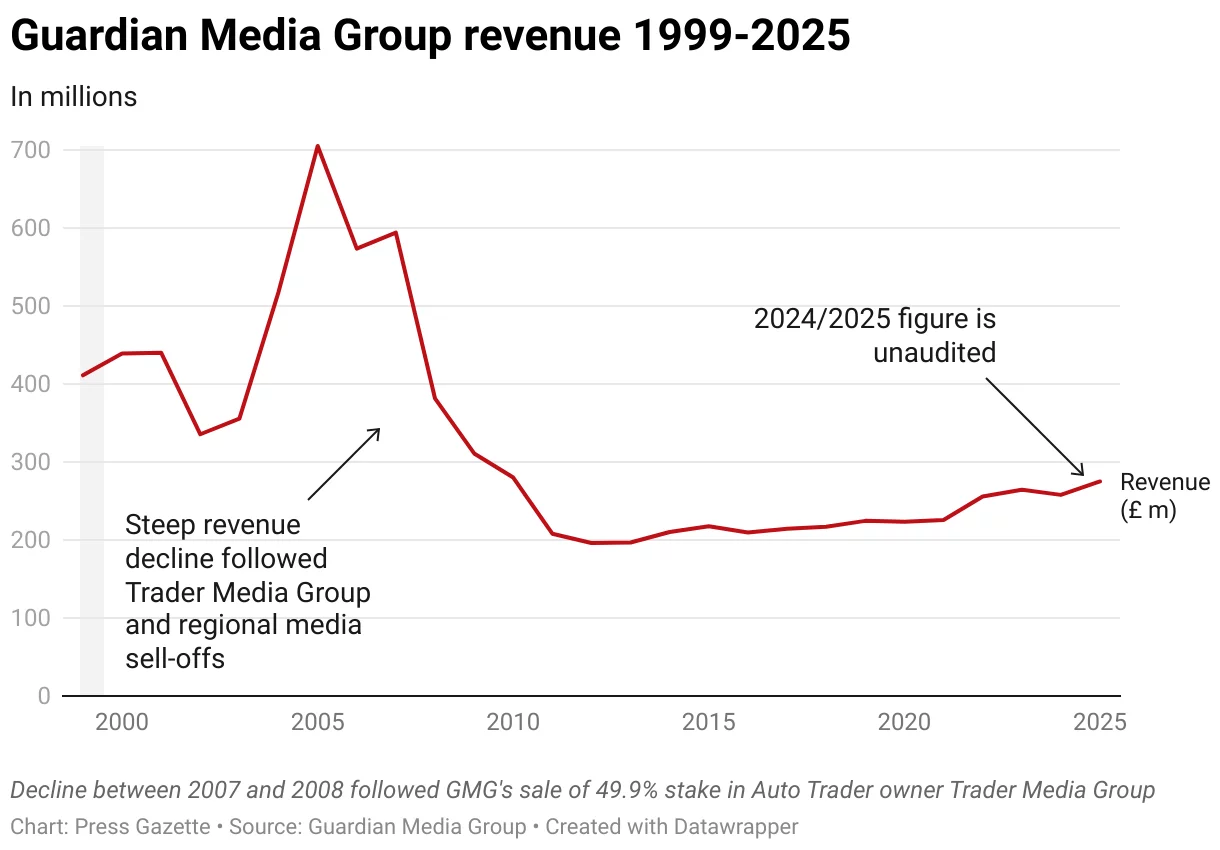
This underscores the impact of a clear, purpose-driven CVP that resonates with readers.
Implement effective bundling strategy
Bundling a core subscription with additional products or services increases the perceived value and makes the subscription more difficult to cancel. This creates "cross-subsidization", where a subscriber who might be experiencing "news fatigue" can still find value in other offerings.
Successful bundling strategies
The New York Times has successfully added 350,000 net digital-only subscribers in the fourth quarter of 2024. The title has transformed from a single "product" to a diversified "platform" by bundling its core journalism with offerings like NYT Cooking, NYT Games, and The Athletic. This strategy has been a resounding success, with bundled subscribers now accounting for 51% of its subscriber base.
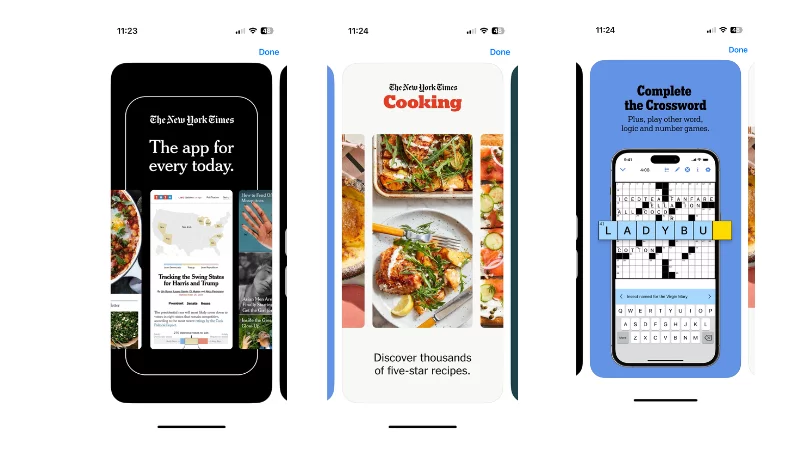
Source: The New York Times
The Philadelphia Inquirer is using product bundling to boost the appeal of its premium subscriptions by including access to The New York Times’ lifestyle offerings. New Inquirer subscribers get a year of NYT Cooking through an access code, giving them recipes from top Times chefs without needing a separate subscription. This approach not only adds value to the Inquirer’s offering but also introduces readers to the NYT’s products, creating a win-win that strengthens engagement and expands audience reach.
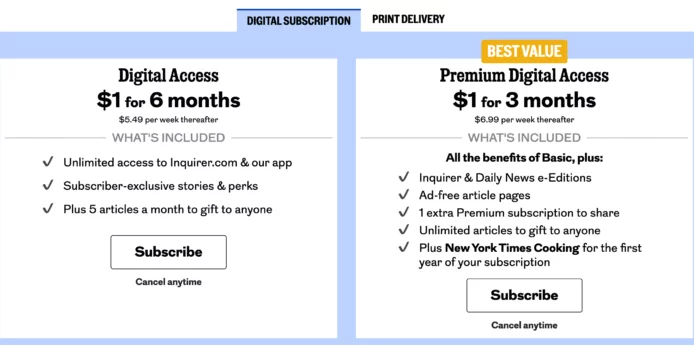
Source: The Philadelphia Inquirer
Bonnier News leverages a subscription bundle, +Allt, to boost reader engagement and lower churn rate. Launched in early 2023, +Allt gives access to over 150 Swedish brands, encouraging subscribers to explore multiple titles regularly. Research showed that higher consumption frequency across these titles correlates with lower churn, making the bundle an effective strategy for building lasting habits.
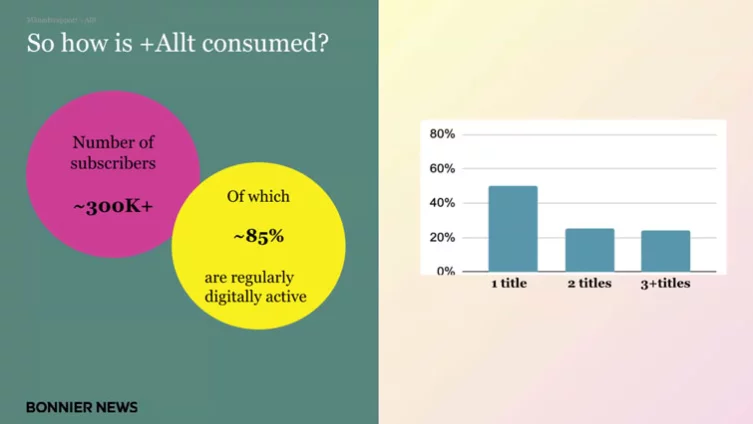
Source: INMA
Offer flexible pricing models
A single pricing tier can be a major source of voluntary churn. Providing a range of subscription options to meet different needs and budgets can help retain a wider audience.
Digital publishing pricing strategies
In 2024, The Washington Post introduced new subscription tiers like "Post Pro" and "Post Plus" to generate revenue from corporate clients and cater to different customer segments. The publisher is also testing a "pay-as-you-go" option for single articles, primarily to capture the email addresses and credit card information of younger, non-core audiences and bring them into the marketing funnel.
Süddeutsche Zeitung, as an example, provides a one-day pass that unlocks full access to all content on its platform for 24 hours, serving as a middle ground between individual article purchases and a full monthly subscription.
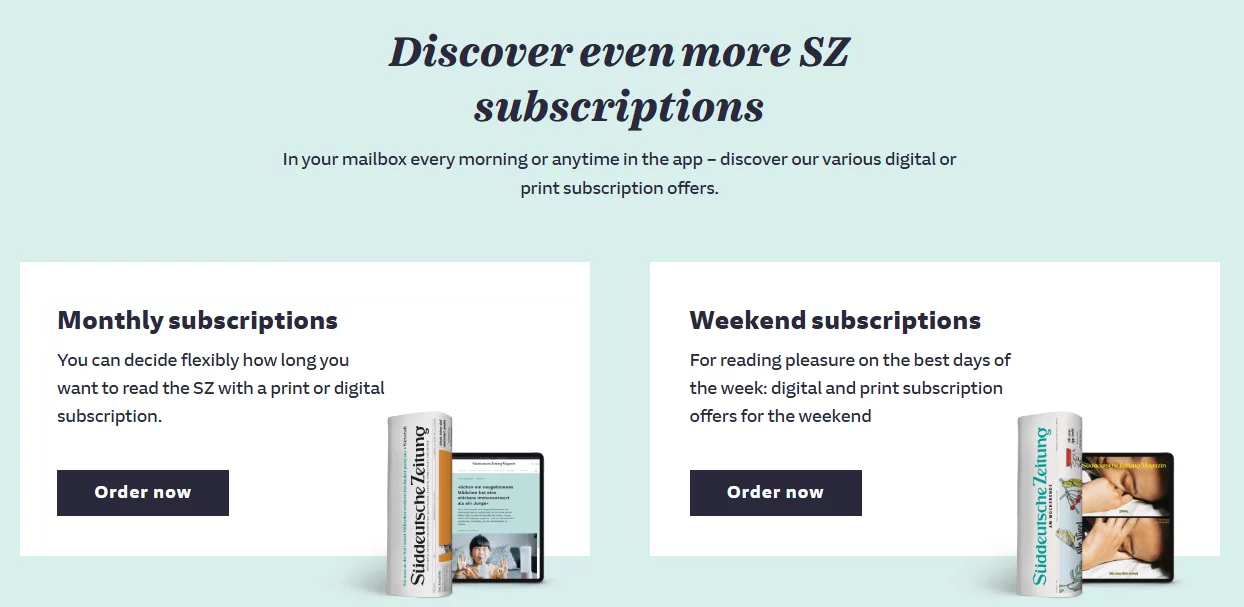
Optimize the onboarding experience
The first month of a subscription is a crucial period for retention. A well-designed onboarding process helps a new subscriber form a habit of regularity, which is a strong predictor of long-term loyalty. This can be achieved through a series of phased messages that introduce the product's full range of benefits without overwhelming the user.
How top publishers optimize onboarding to lower churn rate
Le Monde found that 60% of its digital subscribers use its mobile app daily, and now encourages new subscribers to download it as part of their onboarding process to help build this habit. A smooth sign-up process alone can increase customer lifetime value by 23% by reducing early churn.
Besides familiar tools like newsletters, publishers can use web push notifications to drive app downloads and prompt users to enable mobile push, effectively boosting retention and engagement.
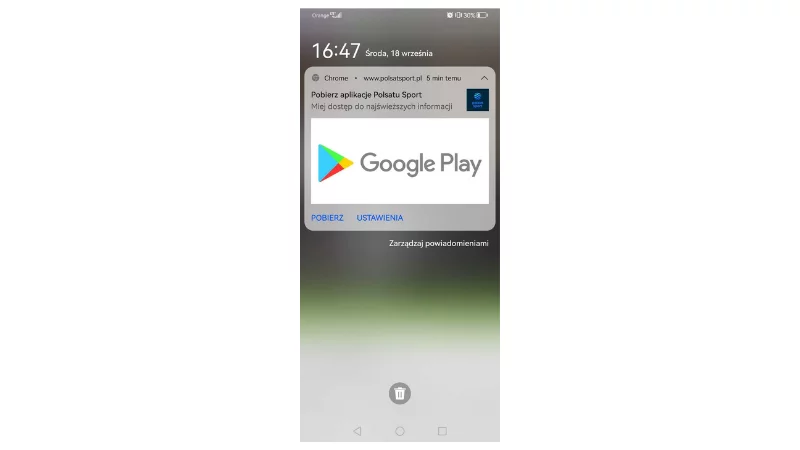
The Washington Post reduces subscriber churn by treating the first 100 days as a critical onboarding period. By prioritizing high-impact messages and focusing on essential subscription knowledge, personalizing communications, and using collected information to guide actions, they build engagement habits that increase long-term retention.
Axios uses onboarding to gather zero-party data at sign-up, asking readers to select their topics of interest. This allows the company to deliver highly targeted local newsletters from day one, helping them gain over 300,000 new subscribers. By personalizing send times for optimal inbox delivery, Axios also boosted open rates by 8%.
Newsday has lowered early churn by creating an onboarding journey that engages subscribers immediately after signup. Through a series of web pages with actionable cards, new users can indicate their interests, choose newsletters, sign up for SMS alerts, watch Newsday TV, or download the app. Iterative testing added additional prompts, such as QR codes for app downloads, breaking news alerts, and introductions to Newsday TV+. The result: subscribers who completed the onboarding process experienced a 44% lower churn rate compared to those who didn’t.
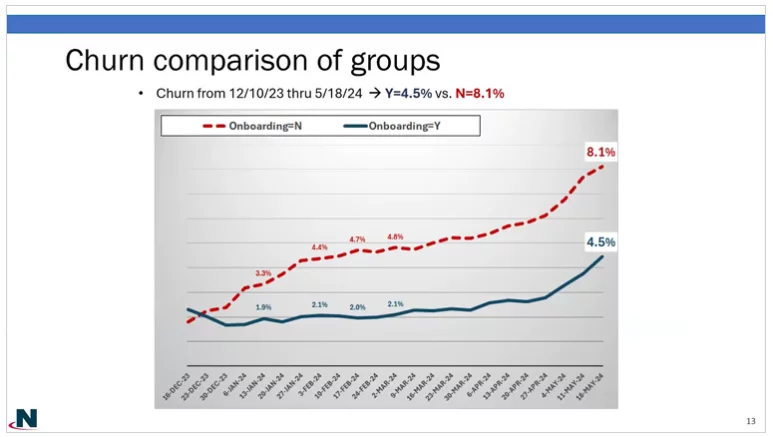
Source: INMA
Using push notifications, onsite and in-app messages, you can guide new subscribers step by step - encouraging app downloads, topic selection, and personalized content preferences from day one. Build habits that stick and reduce early churn while creating a tailored reader experience.

Learn more strategies in our free e-book: Readers’ engagement step by step – omnichannel tools at every stage
Personalize subscriber experience
Personalization makes a subscriber feel "understood and valued," which is a key driver of retention. By analyzing user behavior, digital publishing companies can tailor the experience to individual interests.
Create thematic newsletters or ask users about their preferences at the time of subscription.
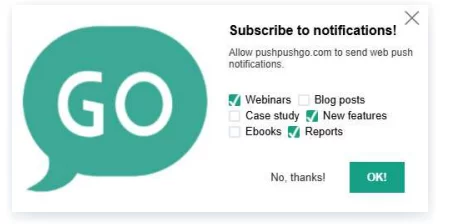
With solutions like web push notifications, it’s possible to track subscriber interests and behavior and deliver the right message at the right time. Even for non-subscribed anonymous website visitors or app users, features such as pop-ups, onsite notifications, or in-app messages can be personalized based on visited URLs, referral sources, time spent on site, etc. - ensuring every interaction feels relevant and engaging.
How publishers tailor experiences
The New York Times uses a recommendation engine powered by machine learning to suggest articles based on a user's reading history. This dynamic content recommendation system increases engagement and can make the subscription feel fresh and consistently relevant.
The Verge recently rolled out personalization features that allow readers to follow individual journalists and specific topics, surfacing this content in a customized homepage feed and daily digest email. By giving users more control over the stories they see and creating direct connections with their favorite reporters, The Verge strengthens loyalty - a key step in lowering churn.
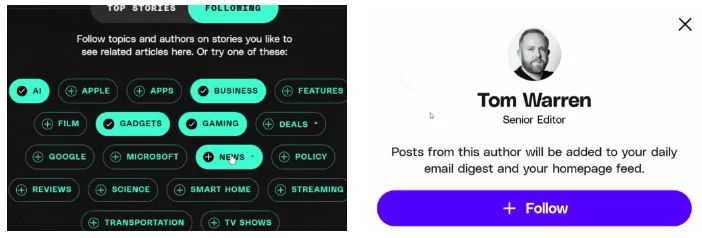
Source: The Verge
Publishers also see the impact of personalization in push campaigns. For example, 24sata achieved a 37% higher CTR with targeted web push compared to mass campaigns, while Žurnal24.si reached over 22% CTR through tailored notifications - proving that relevance drives stronger engagement and retention.
Build community
Fostering a sense of community can be a powerful retention method. It transforms a solitary activity into a shared experience, which can build a deeper connection to the brand and increase loyalty.
Publishers can build this sense of community through multiple channels - from social media, newsletters, and push notifications to website forums and even in-person events.
Building a sense of belonging in digital publishing
Le Monde strengthens its community by offering subscribers exclusive access to its newsroom through initiatives like “Le Monde & Vous,” a monthly chat with the Head of Reader Relations. By providing behind-the-scenes insights, hosting events, and even partnering with businesses to offer special discounts, the publisher fosters a sense of belonging that boosts loyalty and decreases churn.
The Telegraph reduces churn by turning its comment sections into spaces for real community. By encouraging journalists to actively engage “below the line,” they foster meaningful dialogue and stronger reader-journalist connections. This approach has boosted dwell time by 44% and more than doubled comment activity on opinion pieces.
Dancing with the Stars app builds a strong fan community and decreases churn rate by keeping viewers engaged through push notifications. By prompting subscriptions at high-traffic moments, the app grew its push subscriber base by over 30% in the first month of the 2025 season, ensuring fans return regularly and remain connected between live shows.
Use insights and analytics for churn prediction
Instead of waiting for a subscriber to cancel, publishers can use data to identify disengaged users and reach out to them.
Publishers can identify "sleeper" subscribers, those who have not used the product at least once a month, and send them personalized e-mail or push messages with recommended content to re-engage them. In a cancellation flow, a publisher can offer a "cancellation save" by presenting an option to pause the subscription or downgrade to a lower-cost plan.
Practical examples of predictive analytics and proactive retention
The Guardian reduces churn by analyzing engagement data to identify at-risk subscribers and guide them through personalized actions - like signing in, subscribing to newsletters, or downloading the app - that lower churn risk. By combining mission-driven messaging with targeted subscription strategies, they boost loyalty and retention.
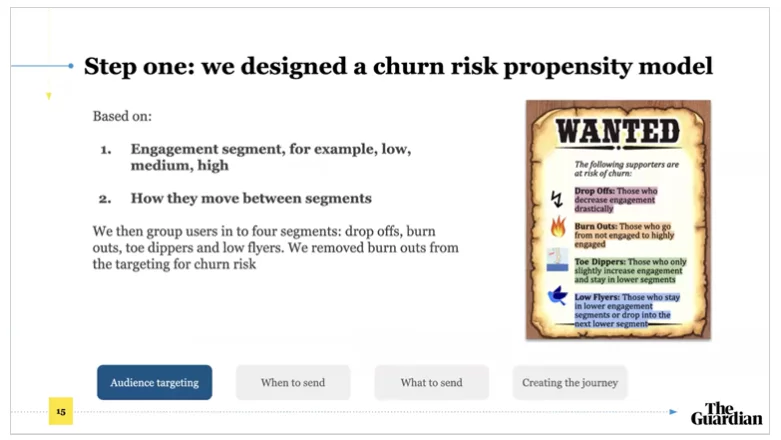
Source: INMA
Tiroler Tageszeitung addresses subscriber churn through a dedicated cross-functional team and a data-driven, user-focused approach. They use automated emails tailored to different subscription types, timely reminders before and after subscription expiry, and personalized offers to highlight subscription benefits. These efforts aim both to prevent cancellations and to encourage resubscriptions, ultimately reducing churn by 20% and improving overall subscriber retention.
Conclusion
Reducing subscriber churn is not a one-size-fits-all task - it requires a strategic, multi-layered approach. From clarifying the value of your content and offering flexible pricing, to personalizing experiences, fostering community, optimizing onboarding, and leveraging data analytics, every touchpoint is an opportunity to retain readers and build lasting loyalty.
Online media companies that proactively understand subscriber behavior, engage readers with relevant content, and create meaningful connections are better positioned to keep their audience satisfied, decrease churn, and grow a sustainable, resilient subscriber base.
For actionable tips and step-by-step strategies to engage readers across multiple channels, download our free e-book: Readers’ engagement step by step – omnichannel tools at every stage
If you would like to try on-site and off-site communication tools offered by PushPushGo, feel free to reach out to our team.

Growth Marketing Manager @PushPushGo
Passionate about advertising, digital technologies and marketing itself. Life motto: "Growth starts out of the comfort zone".
Try PushPushGo to engage and connect with your audience.
Create an account and start testing!





